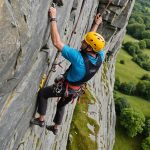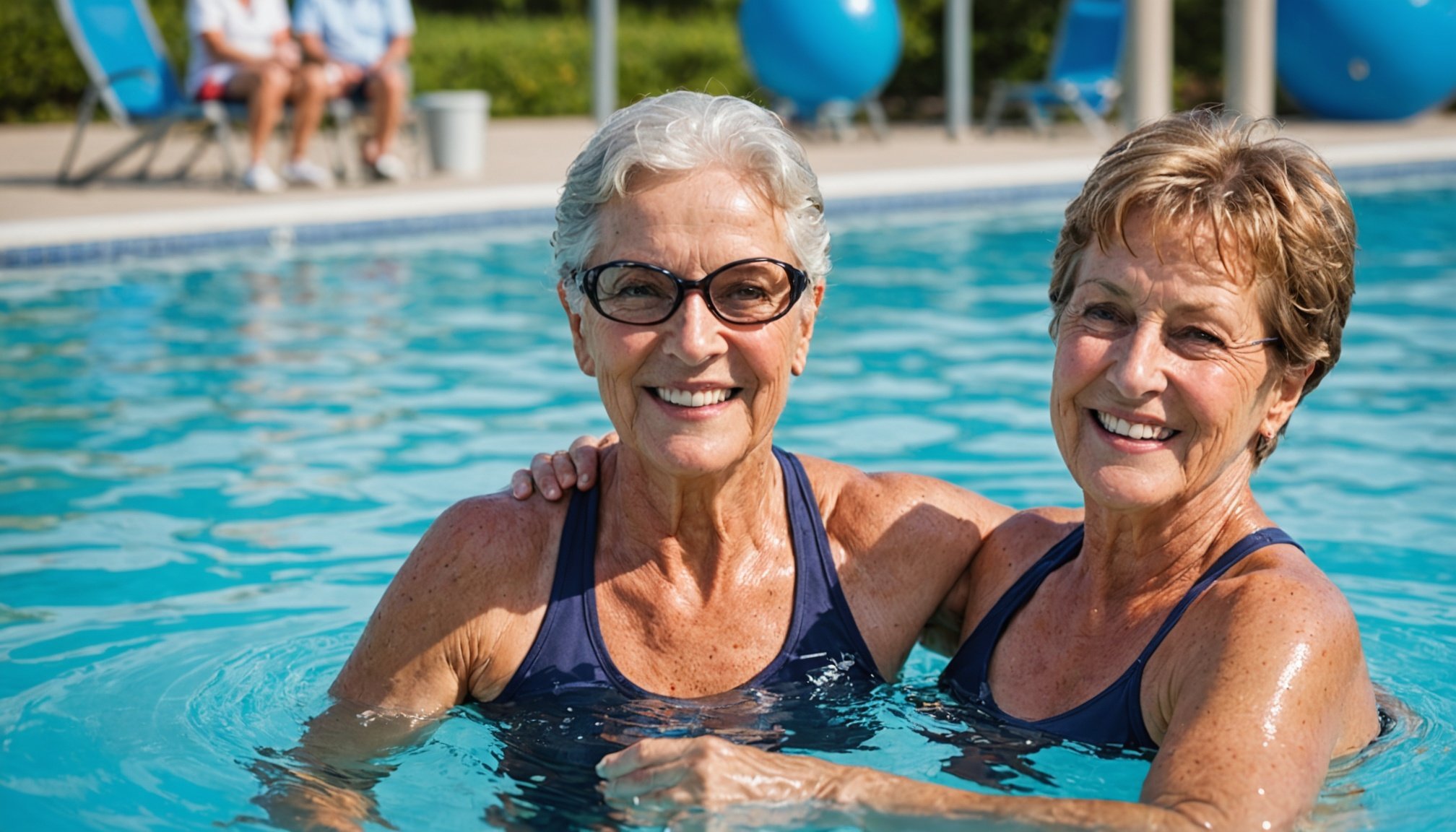Overview of Water Workouts for Seniors
Water workouts have become an essential component of senior fitness routines, mainly due to their gentle yet effective nature. As we age, maintaining a regular exercise regimen is crucial, and aquatic exercises provide a safe environment that supports this need.
Aquatic exercises are celebrated for their unique benefits, especially for seniors. The buoyancy of water provides joint support, reducing the risk of injury and strain, an important consideration for aging bodies. Additionally, these workouts are low-impact, making them ideal for those with arthritis or mobility issues.
Topic to read : Essential Tips for Seniors to Track Blood Pressure from the Comfort of Home
Seniors can explore a variety of environments for these water workouts. Traditional pools offer a controlled setting for exercises like water aerobics, promoting cardiovascular health and endurance. Natural water bodies can also serve as serene backdrops for gentle activities like water walking or aqua yoga, enhancing the exercise experience.
Hydrotherapy, a form of aquatic exercise, is particularly beneficial for seniors recovering from surgeries or dealing with chronic pain, as the warm water soothes muscles and improves circulation. Senior fitness programs can incorporate these workouts to cater to individual needs, encouraging holistic well-being. Whether in a pool or a natural setting, the supportive and low-impact nature of water workouts makes it a fantastic option for senior fitness.
Also to see : Transforming Sleep Spaces: Essential Tips for Seniors to Enhance Sleep Hygiene at Home
Safety Considerations for Aquatic Exercises
When engaging in aquatic exercises, understanding safety tips and implementing strategies for injury prevention is crucial, especially within senior fitness safety contexts.
Firstly, it is important to assess personal fitness levels before beginning an aquatic exercise regimen. Engaging in exercises that align with your current fitness capability minimizes the risk of strain and injury. Understanding your limits is key.
Recognizing common hazards associated with aquatic environments can further enhance safety. Wet surfaces pose a slipping risk, so ensure footwear with good grip is worn when navigating pool areas. Uneven surfaces in the pool itself can lead to trips; always know your surroundings. To prevent overexertion, rest and pay attention to your body’s signals during exercise.
Hydration often goes overlooked in aquatic settings, yet it’s as crucial here as with any workout. The cooling effect of water can mask exertion levels, leading to dehydration. Consume water before and after your exercise to maintain fluid balance.
Lastly, consider the importance of supervision. Having a qualified professional or companion present can offer an additional layer of safety, ensuring that someone can assist in case of an unforeseen incident. By following these guidelines, aquatic exercise can be both safe and effective.
Effective Water Exercises for Seniors
Engaging in aquatic exercises offers an excellent opportunity for seniors to maintain fitness with minimal joint strain. Water’s buoyancy supports the body, reducing stress while promoting cardiovascular health and muscle strength.
Low-Impact Cardio Exercises
For gentle cardiovascular improvements, activities like walking in water and water jogging are beneficial. These senior workouts leverage water’s resistance to enhance aerobic capacity while cushioning joints. Flutter kicking, typically done at the side of the pool, further improves cardiovascular health while being gentle on the knees and hips.
Strength Training in Water
Water resistance exercises provide an effective way to build strength safely. Using foam dumbbells, seniors can perform various exercises such as seated leg lifts to strengthen core and leg muscles. Additionally, arm curls with resistance tools like water gloves or paddles safely enhance upper body strength. These water fitness routines offer resistance in multiple directions, ensuring a comprehensive workout.
Flexibility and Balance Workouts
Enhancing flexibility and balance through aquatic environments can be both soothing and beneficial. Gentle stretching routines, combined with water yoga poses, improve muscle elasticity and joint mobility. Balance exercises using the pool wall, like one-leg stands, help improve stability, reducing the risk of falls on dry land. Water exercise not only promotes physical health but also offers psychological relaxation for participants.
Step-by-Step Guide to Key Exercises
Embrace the world of water resistance with this exercise guide, aimed at elevating your aquatic workout. Engaging in aquatic workout techniques offers a dynamic way to boost fitness while being gentle on the joints. This guide provides comprehensive workout instructions, ensuring you maximise each movement’s benefits effectively.
Begin by exploring the water jogging exercise. Stand upright in the water, maintaining a straight posture. Propel yourself forward by moving your arms and legs as if running. Aim for 20-30 minutes, adjusting the intensity based on your fitness level. For a higher challenge, increase your speed or add ankle weights.
Next, try aqua squats. Position your feet shoulder-width apart and lower your body until your thighs are parallel to the pool floor. Perform 3 sets of 15 repetitions, adjusting the depth for beginners or those seeking a lighter workout.
For upper body strength, practice water push-ups at the pool edge. Stand facing the edge, place hands shoulder-width apart on the ledge, and lower your chest towards the wall before pushing back. Complete 3 sets of 10 repetitions. Modify by changing hand placement or practicing in deeper water.
Modifications are key for catering to different fitness levels. Make exercises more accessible by reducing repetitions or using buoyancy devices for support. Conversely, challenge yourself by incorporating resistance tools like water dumbbells.
Equipment for Aquatic Workouts
Navigating through water workouts can be as invigorating as stepping into a refreshing pool. However, utilising the right aquatic exercise tools is crucial, especially for those prioritising senior fitness. The most essential gear includes kickboards and pool noodles, which are indispensable for both safety and effective exercises. Kickboards provide stability and support, making them perfect for stroke improvement and leg workouts. Meanwhile, pool noodles offer versatility, allowing users to perform a range of low-impact exercises beneficial for senior fitness.
Though not mandatory, some accessories can significantly enhance your workouts. Water weights add resistance, enabling strength training without strain on joints, ideal for seniors. Similarly, resistance bands further amplify the intensity of exercises, aiding in muscle building.
When investing in water workout equipment, proper maintenance is key. Rinse off chlorine and dry gear thoroughly to extend its lifespan. Keep storage in a cool, dry place, ensuring these valuable tools remain in optimal condition.
Whether diving into aquatic exercises for leisure or fitness, these aquatic exercise tools can transform your routine into effective sessions. Adjusting to this medium may take time, but with the right equipment, you’ll swiftly enjoy the health benefits.
Benefits of Aquatic Workouts for Seniors
Aquatic workouts offer unique health benefits particularly suited for seniors, enhancing overall longevity and wellness. Physically, these exercises can significantly improve strength, endurance, and flexibility. Water density provides natural resistance which helps build muscle without adding stress to joints. This is ideal for older adults seeking to maintain or improve physical capabilities while minimizing injury risk.
Mentally, engaging in aquatic fitness activities has been shown to facilitate stress reduction and mood enhancement. The soothing properties of water can create a calming environment, which many participants find therapeutic. Combined with the rhythmic motions of swimming or water aerobics, it often leads to a significant uplift in mood and reduction in anxiety.
In addition to physical and mental benefits, the social aspects of group water classes should not be underestimated. Participating in structured classes encourages interaction, fostering a sense of community and friendship among peers. This social engagement can be crucial for seniors, often contributing to enhanced emotional well-being and preventing feelings of isolation.
Overall, aquatic workouts are an impactful way for seniors to maintain health and vitality, supporting both body and mind in a playful and engaging manner.
Expert Insights and Testimonials
Experts and enthusiasts alike have delved into the benefits of aquatic fitness, often offering enlightening opinions on the subject. Fitness professionals emphasize that water workouts provide a unique, low-impact alternative to traditional exercise. The buoyancy of water reduces stress on joints, making it an excellent choice for seniors and individuals with mobility issues.
Numerous success stories highlight the transformative power of these workouts. Seniors report improved mobility and reduced pain, often attributing their increased freedom to regular aquatic exercises. Their experiences underscore the importance of finding sustainable, enjoyable fitness solutions.
Physiotherapists frequently provide guidance on maximizing the benefits while ensuring safety. They emphasize the importance of using proper techniques and selecting exercises appropriate for individual health needs. This tailored approach ensures that each session is both effective and safe.
By combining expert opinions and real-life experiences, individuals can gain a comprehensive understanding of the potential of water workouts. Engaging in aquatic fitness not only aids in physical health but also enhances overall well-being.











